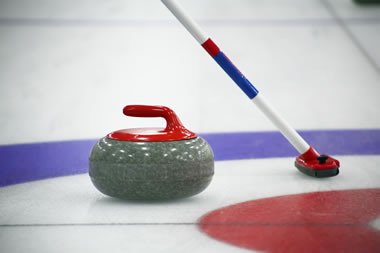Curling stones used in the olympic sport of curling are made from granite

Curling Stones: The Essential Tools for Olympic Curling

When the Winter Olympics roll around, one of the most captivating sports to watch is curling. This Olympic sport, which originated in Scotland in the 16th century, involves players sliding heavy stones across the ice towards a target area, while teammates use brooms to sweep the ice in front of the stone, reducing friction and helping it to travel further. While the strategy and athleticism of the players are crucial, the tools they use, known as curling stones, play an equally vital role in the game.
The Role of Granite in Curling Stones

Curling stones, also commonly referred to as rocks, are distinctively made from granite. Why granite? Well, granite possesses several properties that make it an ideal material for creating these stones. Granite is a type of igneous rock that is mainly composed of quartz, mica, and feldspar. It is known for its durability, density, and resistance to abrasion, which are all highly valuable characteristics when it comes to curling stones.
The Selection Process of Granite for Curling Stones
Not all types of granite can be transformed into curling stones. The selection process is meticulous and crucial. The ideal type of granite comes from specific locations worldwide, such as Ailsa Craig in Scotland, Trefor granite in Wales, and Redstone granite in the United States. These sources provide granite that has the desired qualities needed for curling stones.
The Making of Curling Stones
To create a curling stone, the selected granite is shaped into a circular and disc-like object with a handle attached. The handle allows players to grip the stone firmly and deliver the necessary force and control. The standard size of a curling stone is about 91.4 centimeters (36 inches) in circumference and weighs approximately 19.96 kilograms (44 pounds). The stones are carefully manufactured to meet these dimensions, ensuring consistency and fairness in the game.
The Science Behind Curling Stones
Granite’s unique properties play a significant role in how curling stones perform on the ice. The density of granite enables the stones to have a lower coefficient of friction with the ice, allowing them to glide smoothly and efficiently. This smooth gliding action allows players to execute the desired curl or spin on the stone as it moves towards the target area. Furthermore, the hardness of the granite ensures that the stones withstand repeated impacts with other stones and maintain their shape and integrity over time.
Conclusion
Curling stones made from granite are an integral part of the Olympic sport of curling. The selection and careful manufacturing process ensures that the stones meet the necessary standards for this highly strategic and precise game. The combination of granite’s properties, including durability, density, and resistance to abrasion, allows the stones to perform optimally on the ice and provide an exciting spectacle for both players and spectators alike.
Source: Geology.com
Tags
Share
Related Posts
Quick Links
Legal Stuff

